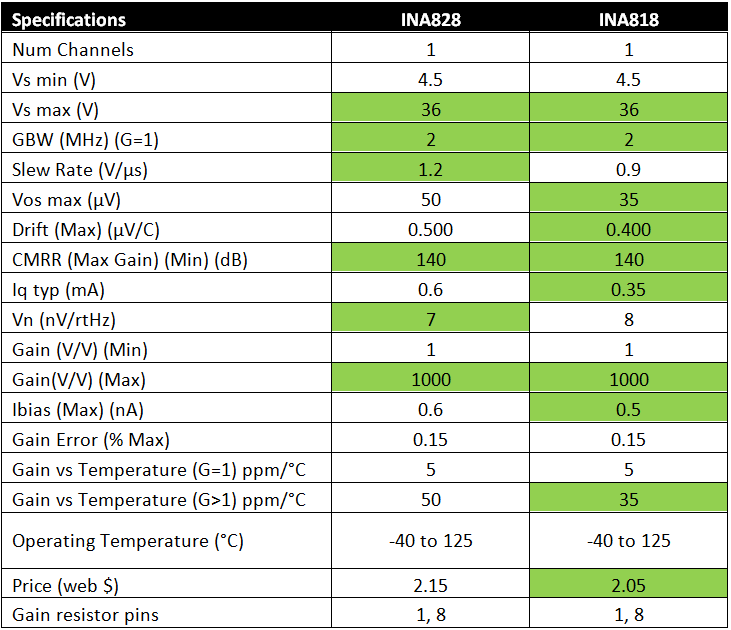Other Parts Discussed in Thread: INA818, , INA821
Hi,
I can compare the gain drft with the Max rule, but I want to compare the actual ability value.
Even if you check the data, the unit is different.
I look best at INA818.
Which of INA818, INA828 and INA821 should be understood as the best Gain drift?
Best Regards,
Kenji
| I can compare the gain drft with the Max rule, but I want to compare the actual ability value. |
| Even if you check the data, the unit is different. |
| I look best at INA818. |
| Which of INA818, INA828 and INA821 should be understood as the best Gain drift? |



